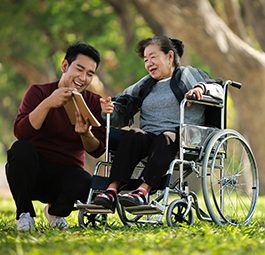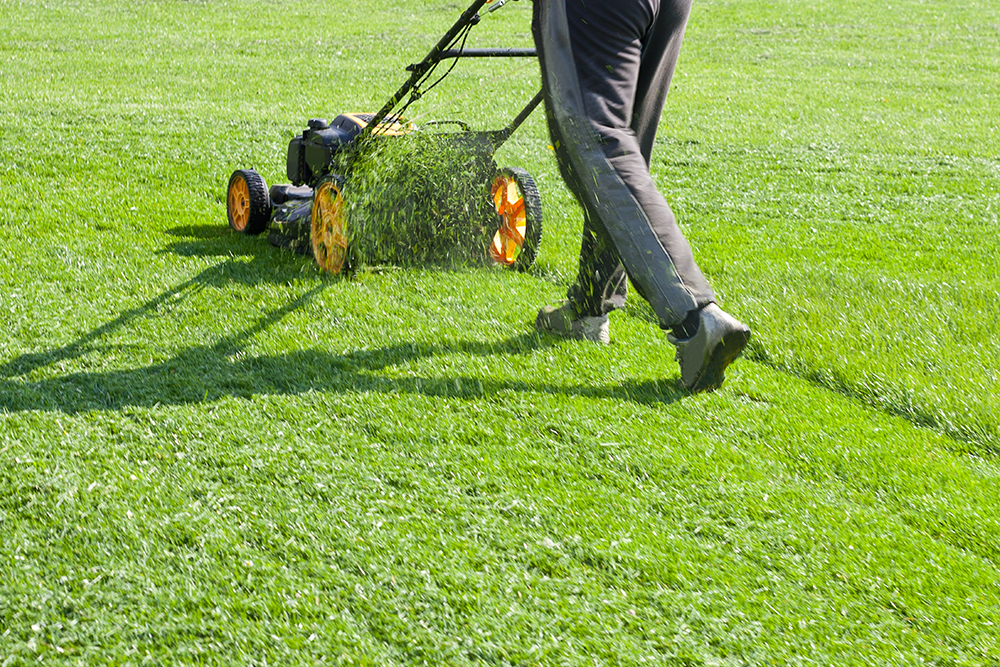Asthma
Tobacco Smoke, Vaping, and Asthma
Cigarette smoking is the leading cause of preventable deaths in the United States. It can trigger asthma attacks or make asthma worse in people who have asthma.1 Tobacco can be bad for your health even if you are not the one smoking. Breathing in the smoke can lead to many health problems.
Vaping is also bad for you. E-cigarettes are often marketed as better than tobacco, but they have harmful chemicals and create air pollution too. Vaping emissions can have negative effects, especially in infants, children, pregnant people, and people with lung conditions such as asthma.
What Is in Tobacco Smoke and E-Cigarette Aerosol?
Tobacco smoke has more than 7,000 chemicals.1 This includes trace amounts of poisons, such as formaldehyde, arsenic, DDT, and cyanide. At least 70 of the substances in tobacco smoke can cause cancer.2 Many more irritate the lungs and airways.

E-cigarettes are sometimes called e-cigs, electronic nicotine delivery systems (ENDS), vape pens, or vapes. They work by heating liquid found in cartridges. This creates a mist or aerosol that is breathed into the lungs. The act of breathing e-cigarette aerosol in and out is known as vaping.
E-cigarette aerosol often contains nicotine and other toxic chemicals.3 This may cause serious health conditions, such as lung disease, heart disease, and cancer. The aerosols create air pollution that is a health risk to the users and non-users around them.
Harmful substances found in e-cigarettes include:3
- Nicotine
- Cancer-causing chemicals (carcinogens)
- Very fine particles that can be breathed into the lungs
- Volatile organic compounds (gases released into the air from products)
- Chemical flavoring that is linked to serious lung disease
- Heavy metals, such as nickel, tin, and lead
It is hard to know exactly what is in e-cigarettes. For instance, some products that claim not to have nicotine have been found to contain nicotine.
How Is Secondhand Smoke Linked to Asthma and Allergies?
Environmental tobacco smoke (ETS) is also called “secondhand smoke.” This refers to the smoke that is released into the air when a smoker breathes out. It also refers to the smoke released from a burning cigarette, cigar, or pipe.
Secondhand smoke is harmful. A person who is around someone who is smoking is also exposed to the same harmful chemicals in the smoke. Secondhand smoke can trigger asthma attacks or make asthma worse. It can cause heart disease, stroke, and lung cancer, too.
Children are at high risk of lung damage and illness from breathing in smoke. Studies have shown a clear link between secondhand smoke and asthma in children. But studies have not proven that secondhand smoke causes asthma in children.
Secondhand smoke can cause serious health problems in children.
- Secondhand smoke can trigger asthma attacks in children who have asthma. Children with asthma who are around secondhand smoke have worse and frequent asthma attacks.1
- Studies show that children whose parents smoke have a greater chance of getting sick more often. Their lungs may grow less than children who do not breathe secondhand smoke. They also have a higher risk of more bronchitis and pneumonia.1
- Wheezing and coughing are more common in children who breathe secondhand smoke.4
- Children whose parents smoke around them get more ear infections. They have fluid in their ears more often. They also have more operations for ear tubes for drainage.4

How Is Secondhand E-Cigarette Aerosol Linked to Asthma?
Studies have shown that secondhand e-cigarette aerosol can worsen existing asthma and cause asthma flare-ups, especially in young people.5 Exposure to secondhand e-cigarette aerosol can cause the following respiratory symptoms:
- Wheezing
- Shortness of breath
- Cough
- Increased or thickened mucus
Secondhand vape is e-cigarette aerosol inhaled by someone who doesn’t vape. Experts are still learning about secondhand vape. But they do know it is harmful. It can cause some of the same health problems as vaping.
What Is Thirdhand Smoke?
Thirdhand smoke is residue from tobacco smoke. When a cigarette is smoked, chemicals in the smoke stick to surfaces and dust for months after the smoke is gone. The chemicals in the residue then react to other pollutants in the air, like ozone, to create harmful particles you can easily breathe into your airways.6
Thirdhand smoke particles are extremely tiny, easily making their way into your lungs. These particles can stick to skin and clothing. Adults and children then breathe in the residue or absorb it through their skin or mouth.
Babies and young children can ingest these toxic particles because they put their hands in their mouths often. They are more likely to touch a surface and then eat without washing hands. Also, children can absorb these chemicals through their skin. For example, if a child is put into a car seat wearing only a diaper and people smoke in the car – even when the child isn’t present – then the car seat may be coated in these chemicals.
Some experts believe thirdhand smoke may be worse for people with asthma than nicotine.
Smoking outdoors does not reduce the threat of thirdhand smoke because it can cling to a person’s clothing. Airing out rooms or cars doesn’t help. Open windows, fans, air filters or confining smoking to certain rooms or outside will not reduce thirdhand smoke either.

What Is Thirdhand E-Cigarette Aerosol?
Scientists are still learning about thirdhand e-cigarette aerosol. But they do know that the substances found in e-cigarette aerosol can stick to surfaces.6 This is known as thirdhand vape or thirdhand e-cigarette aerosol.
Some studies have shown that the nicotine found in e-cigarette aerosol can land on tables, walls, floors, and windows.6 It can then get into people’s bodies if they touch it, swallow it, or breathe it in. Infants and toddlers are most at risk of exposure to thirdhand vape. This is because many kids touch a lot of surfaces and put objects in their mouths. It can also be hard to remove nicotine from surfaces because it is very hard to clean with regular soap. It must be removed with an acidic cleanser.6
What Is the Link Between Smoke, E-Cigarette Aerosol, and Teens?
Teen smoking has always been a concern. Most people who smoke start smoking by age 18.7 Even though only 13 out of 100 of high school students say they currently smoke cigarettes (traditional or electronic), 28 out of 100 have tried a tobacco product.8
Vaping is becoming more popular among teens. The CDC’s 2023 Youth Data shows that almost 1 out of 20 middle schoolers and about 1 out of 10 high school students reported using e-cigarettes in the past 30 days.7 This means the number of students using e-cigarettes almost doubles between middle school and high school.
E-cigarettes could be popular among this age group because the liquid found in e-cigarette cartridges often comes in flavors that appeal to young people. The CDC’s 2023 Youth Data shows that almost all of high school students (90.3%) and middle school students (87.1%) who used e-cigarettes in the past 30 days said they used a flavored e-cigarette during this time.7
Flavored cartridges have been banned by the Food and Drug Administration (FDA). But these cartridges are still easy to buy because of an influx of imported flavors, making it harder to enforce the ban.
Many communities and local governments are trying to control tobacco advertising aimed at teens. The rise in vaping is concerning because e-cigarettes can have harmful substances that put teens at risk of illness. A recent study from Texas A&M University found that vaping is linked to smoking cigarettes, depression, behaviors related to substance (drug and alcohol) abuse, and increased risk of asthma in teens.8
Where Can I Get Help to Quit Smoking or Vaping?
People have different motivations to quit smoking or vaping. For some, they want to improve their health. For others, they want to protect loved ones around them from the effects of secondhand or thirdhand smoke. Some people have ethical concerns with how the materials used to create e-cigarettes/vapes are sourced. (Electronic items with lithium-ion batteries are tied to mining operations with rampant human rights abuses.) Disposable cartridges also contribute to plastic pollution.
It is important to have support to help you quit. Signs of a nicotine addiction can include:
- Craving nicotine
- Unable to stop smoking or vaping
- Developing a tolerance (needing to use more to feel the same effects)
There is free help and resources available by phone, online, or mail from the CDC. Call 1-800-QUIT-NOW (1-800-784-8669). Callers are routed to their state quit lines, which offer several types of information and services. These may include:
- Free support, advice, and counseling from experienced coaches
- A personalized quit plan
- Practical information on how to quit, including ways to cope with nicotine withdrawal
- The latest information about stop-smoking medicines
- Free or discounted medicines (available for some callers in most states)
- Referrals to other resources
- Mailed self-help materials
If you prefer online help, visit smokefree.gov. You will find online resources like:
- Live online chat
- Building a quit plan
- SmokefreeTXT
- QuitSTART app
- Links to Smokefree Espaňol, Smokefree Teen, Smokefree Women, SmokefreeVET, and Smokefree60+
How Can I Reduce My Family’s Exposure to Secondhand and Thirdhand Smoke and E-Cigarette Aerosol?
As a parent or caregiver, you can limit your family’s exposure to tobacco smoke and e-cigarette aerosol.
- If you smoke or vape, do your best to quit. Resources and groups above are available to help you.
- Talk with your children about the dangers of smoking and vaping and how it affects asthma.
- Ask other people not to smoke or vape in or near your home and car.
- Visit smoke-free and vape-free homes and businesses with a no-smoking/no-vaping policy.
- Choose child care that will not expose your child to second- and thirdhand smoke or vape. Even if a caregiver doesn’t smoke or vape around a child, they can still expose a child to thirdhand smoke and vape on their clothes or skin. Remember, children exposed to cigarette and e-cigarette aerosol and residue may get sick more often. Protecting them from exposure is good preventive medicine. Your child’s health depends on it.

Medical Review: May 2024 by Maureen George, PhD, RN, AEC, FAAN
Closed
References
- National Center for Chronic Disease Prevention and Health Promotion (US) Office on Smoking and Health. (2014). The Health Consequences of Smoking—50 Years of Progress. Centers for Disease Control and Prevention (US). https://www.ncbi.nlm.nih.gov/books/NBK179276/
- Centers for Disease Control and Prevention (US); National Center for Chronic Disease Prevention and Health Promotion (US); & Office on Smoking and Health. (2010). How Tobacco Smoke Causes Disease: The Biology and Behavioral Basis for Smoking-Attributable Disease. https://www.ncbi.nlm.nih.gov/books/NBK53017/
- U.S. Department of Health and Human Services. (2016). E-Cigarette Use Among Youth and Young Adults: A Report of the Surgeon General. https://www.cdc.gov/tobacco/data_statistics/sgr/e-cigarettes/pdfs/2016_sgr_entire_report_508.pdf
- Office on Smoking and Health (US). (2014). The Health Consequences of Involuntary Exposure to Tobacco Smoke. Centers for Disease Control and Prevention (US). https://www.ncbi.nlm.nih.gov/books/NBK44324/
- Islam T, Braymiller J, Eckel SP, et al. Secondhand nicotine vaping at home and respiratory symptoms in young adults. Thorax 2022;77:663-668.
- Goniewicz ML, Lee L. Electronic cigarettes are a source of thirdhand exposure to nicotine. Nicotine Tob Res. 2015 Feb;17(2):256-8. doi: 10.1093/ntr/ntu152. Epub 2014 Aug 30. PMID: 25173774; PMCID: PMC4837997.
- Youth and Tobacco Use. (2023, November 2). Centers for Disease Control and Prevention. https://www.cdc.gov/tobacco/data_statistics/fact_sheets/youth_data/tobacco_use/index.htm
- Henton, L. (2023, September 18). Researchers Find Association Between Vaping And Asthma Among US Adolescents. Texas A&M Today. https://today.tamu.edu/2023/09/18/researchers-find-association-between-vaping-and-asthma-among-us-adolescents

Asthma Capitals
Where you live can have an impact on your asthma. AAFA’s Asthma Capitals™ report looks at the top 100 most challenging cities in the continental United States to live with asthma.













